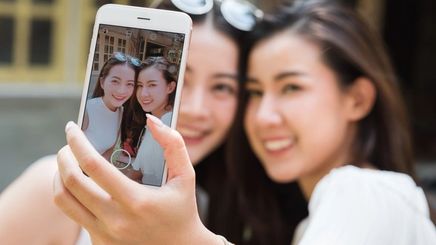
Beauty is a constantly evolving industry driven by creativity, innovation, and people. The market is more powerful than ever, inspiring transformation in the beauty space instead of allowing brands to string them along. Recent trends have even set off profound shifts in how society perceives “beauty” itself. Emerging trends are no different, some you might even call tectonic.
Trends in 2023 focus on you, the consumer. Technologies and innovations will change the game, creating a more personalized approach to beauty. Read on for the major movements in beauty in the coming year.
This Time, It’s Personal
Market intelligence agency predicts a shift from herd mentality to “me mentality.” One of the emerging trends in consumer behavior, this new mindset stems from having had to function as a community during the pandemic.
Call it the beauty version of . As people rebuild their identity and, in the process, rekindle their relationship with beauty, new needs and desires will arise. It includes the demand for more wellness-oriented products, such as beauty and sleep supplements; luxurious skin, body, and hair care; and . Cocooning may replace isolation; self-pampering could replace hygiene-related vigilance.
In the beauty context, it’s all about being yourself as a form of taking your power back. Expect bold, creative choices in and makeup as brands cater to an increasingly personal and diverse definition of beauty. Think “nocturne” aesthetics a la Euphoria and metaverse-inspired holographic finishes. Skin care, on the other hand, will return to effective, affordable basics. To save money amid rising living costs, consumers will turn to trusted, no-fuss, non-gender-targeted brands that work.
The Beauty Tech Takeover
In line with the increased demand for personalization, among the more practical emerging trends in tech, beauty tech uses artificial intelligence (AI) and augmented reality (AR) in virtual try-on technologies and diagnostics. Several big brands have already implemented AI-powered tools. The beauty of these innovations is that they perfectly complement omnichannel shopping. According to Perfect Corp., it can increase sales by up to 2.5 times and drive triple-digit boosts in customer engagement and other metrics such as time spent on the website and number of “add-to-carts.”
AI beauty diagnostics tools can personalize customer experience based on their hair, face, and skin goals. A simple selfie can help the technology assess your skin or hair’s condition, recommend products, and propose a beauty regimen to help you achieve your goals.
This level of personalization aligns with other consumer trends, putting brands a step ahead of the market’s needs and desires. Other emerging trends in beauty tech include using the metaverse and NFTs to boost customer loyalty and interaction. Beyond collectible art, NFTs of the future offer real-world value, such as access to rewards programs, elite memberships, and profit sharing.
Inclusive Products and Redefined Purpose
With social media still the reigning platform for the mass market, consumers – with their voices and disposable income – are expected to hold even more power over shaping brands. The fact that anyone can be an influencer makes industry players, big or small, sit up and listen. According to Mintel’s research, the coming year will see new formulations and products with unique applications.
Recently, American beauty editor Faith Xue raved about the growing inclusivity in the beauty industry, citing examples of products that cater to the non-Caucasian market, such as falsies for monolids and that won’t leave a white cast on dark skin. These are the kinds of new applications you'll see more of.
Some predictions include scalp and scented nail polish. Stick versions of everything are also in vogue, as jumpstarted by the K-beauty moisturizing stick craze. Packaging is also part of this shift. Refillable options will be more widespread, as will inclusive cases, pumps, bottles, and jars with better grip.
Intentional Spending
Finally, 2023 will see renewed emphasis on intentional spending. This doesn’t mean people will be spending less on skin, hair, fragrance, and makeup products – on the contrary, the global beauty industry is expected to increase total revenues by 15.9%, amounting to $108.7 billion. However, people will be more conscious about what they spend their cash on.
Mintel notes this as the influence of the “democratization of science” (thanks, !), which helps consumers make informed purchases. Beyond making budget-friendly choices, they will also consider quality, effectiveness, flexibility, and sustainability. Money should be well-spent – whether it’s on a $300 face serum or a P70 drugstore brand is up to them.
The emerging trends in beauty for 2023 appear to be propelling the industry toward a more inclusive, intuitive, and personal direction. These exciting strides in technology, product innovation, customer education, and beauty standards are only the beginning – who knows what the year will bring. Not more celebrity beauty brands, maybe?